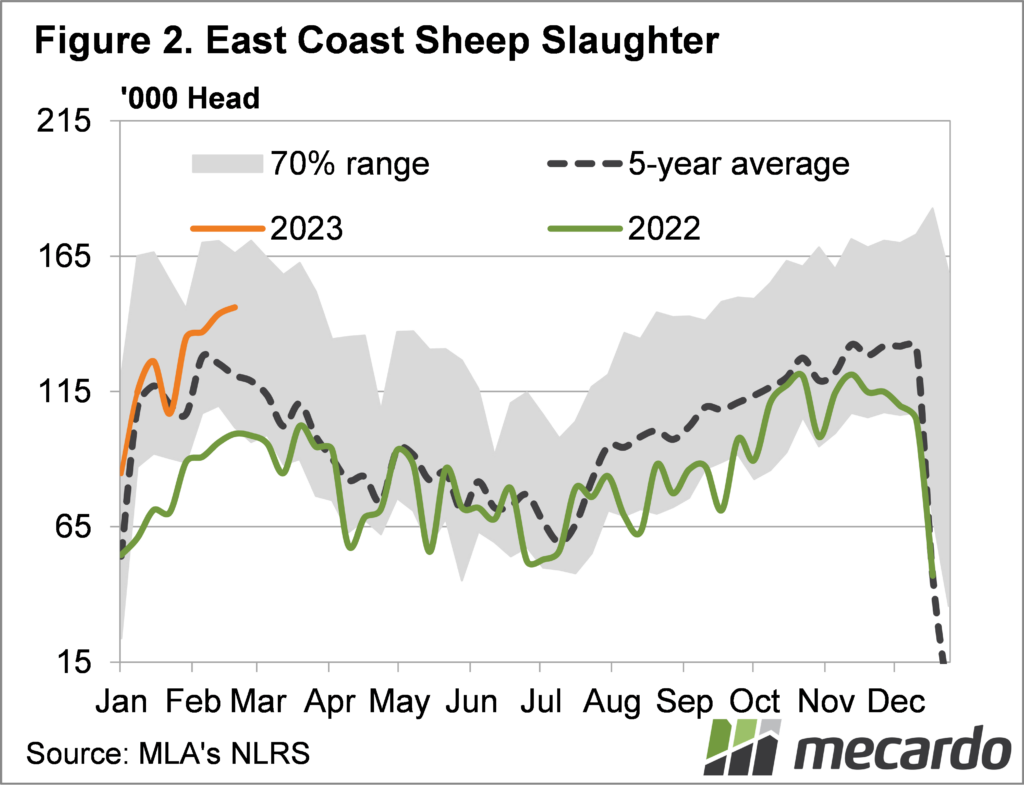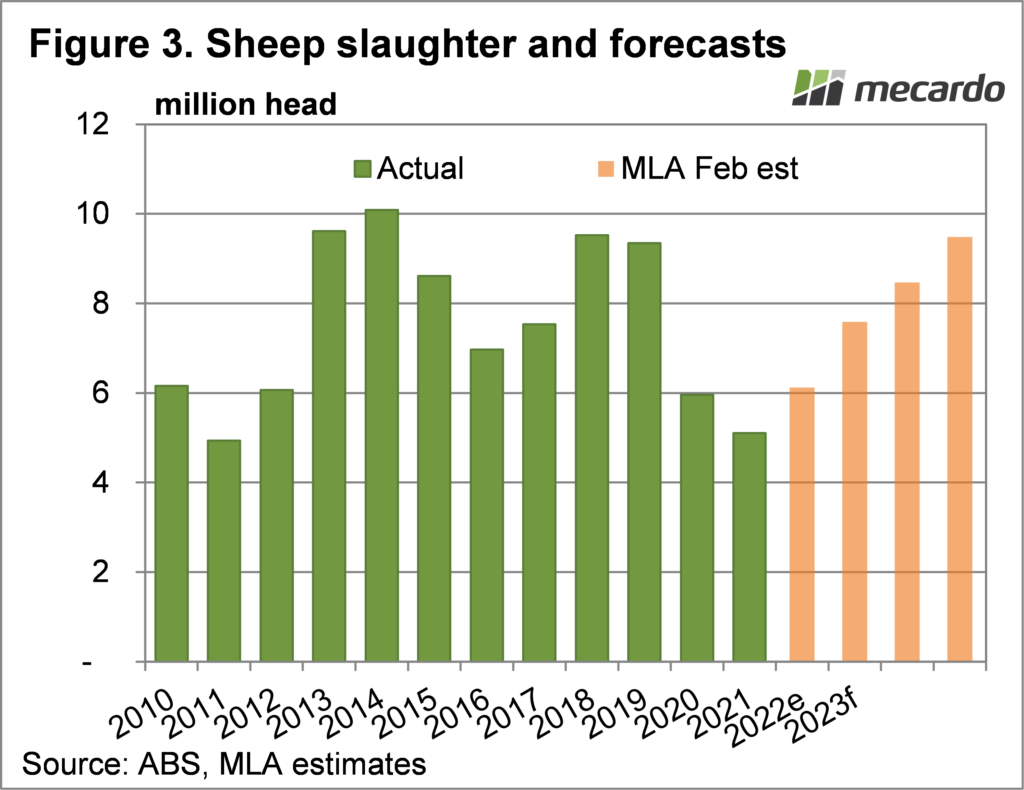Mutton prices are weak on almost every measure. Compared to the last five years, mutton is cheap. Compared to lamb, mutton is cheap. Compared to beef, mutton is cheap. The only thing it’s not cheap when compared to is goat meat. Here we go looking for upside.
Figure 1 paints the dreary picture of the mutton market. The last time mutton was this cheap, which is in the 300-400¢ range, was during 2015-16. Even during the drought of 2018-19 mutton held between 400 and 500¢.
The positive is prices remain better than any time prior to 2010, but that is cold comfort for those looking to sell sheep.
A relatively sudden shift in supply appears to be the main issue for the mutton market. Figure 2 shows east coast sheep slaughter has been hovering around 50% higher than the same time last year. That is a big increase for a supply chain which hasn’t had to deal with those sorts of volumes since 2019.
It is interesting to note that in 2019 mutton prices were still in the 400-500¢ range. This suggests demand for mutton is weaker, and this can be either at the export end, or at processor level. The issue at processor level is that lamb supply is also good at the moment.
There is only so much kill space for sheep, lambs and goats, and it doesn’t matter how good export prices are when there is a bottleneck at processor level. It then comes back to producers’ willingness to accept current prices, and it looks like plenty are willing.
The latest data on export values we could find was for December. Back then mutton was making around 700¢/kg swt, which was well back from the peaks of 900-1000¢ in mid-2022. Increasing mutton supplies are likely to have depressed export values as well.
There could be a little relief in the short to medium term. Meat and Livestock Australia (MLA) are forecasting sheep slaughter to be up 24% this year. Currently we are running 50% higher, so mutton slaughter would have to pull back significantly to meet this target.
What does it mean?
The annual supply slowdown in late autumn and winter might provide some price support, but figure 3 shows it might only be temporary. The rapid growth in the flock in the last two years, which has helped prop up mutton prices, means there will be many more sheep for sale going forward.
Hopefully good processing margins encourage an increase in kill space and open up new export markets so mutton prices can find some support.
Have any questions or comments?
Key Points
- Mutton prices are weak compared to other meats and the recent past.
- It has been seven years since mutton has traded this consistently low.
- There might be some support in the short term, but an increase in kill space is required for longer term price support.
Click on figure to expand
Data sources: ABARES, MLA, ABS, Mecardo




